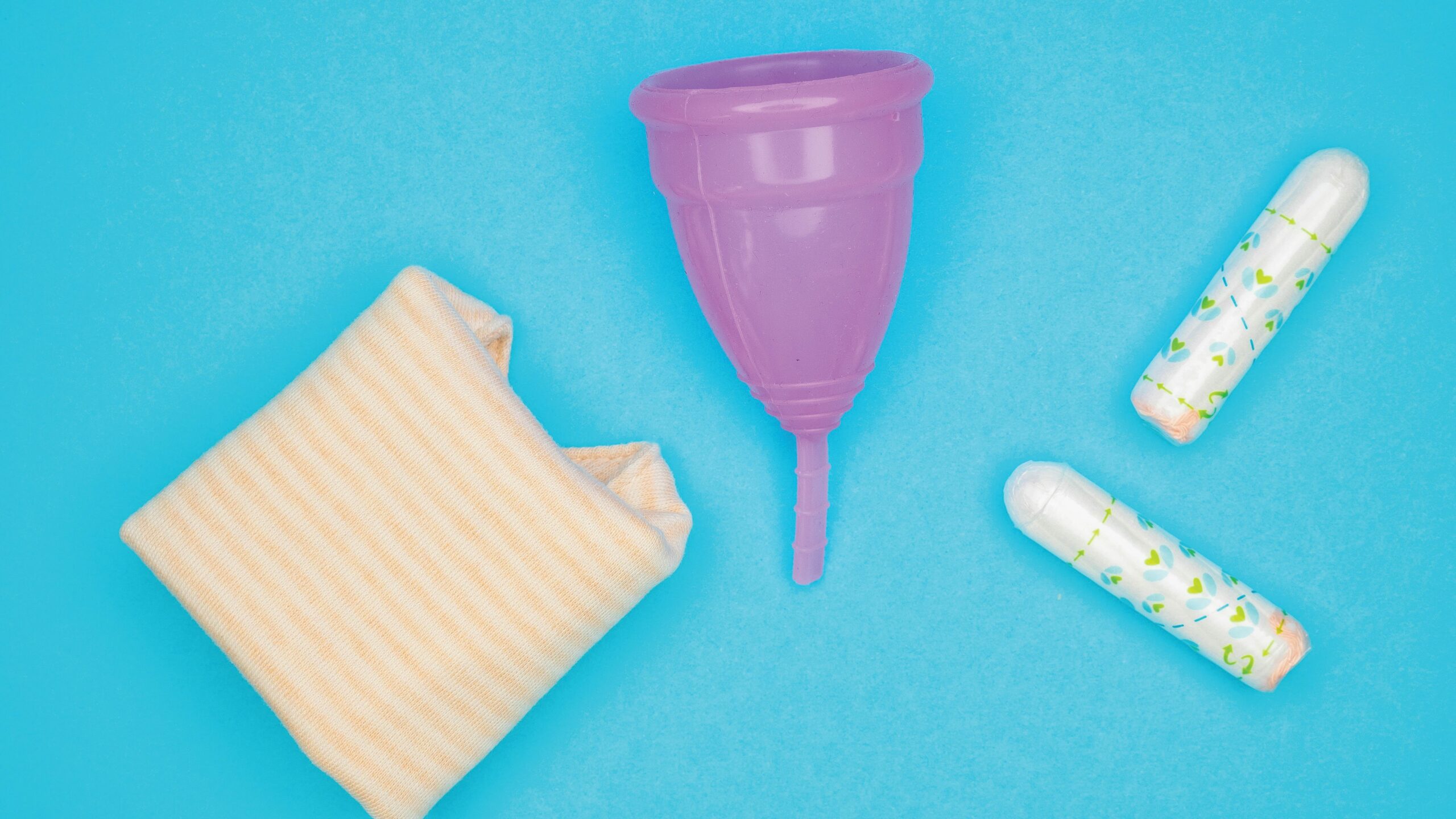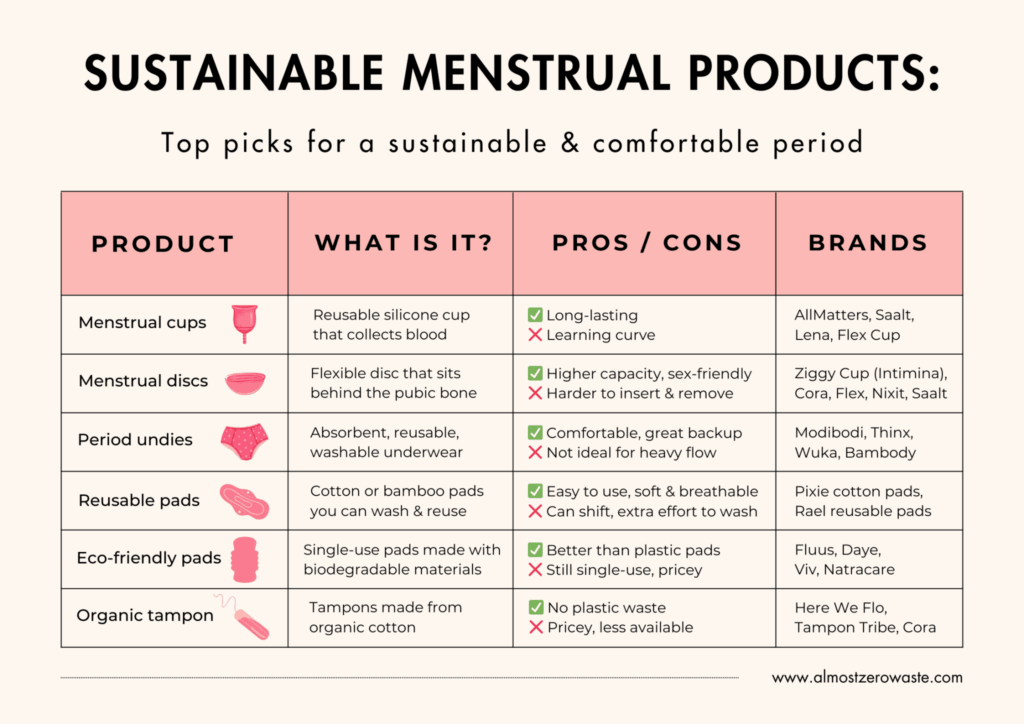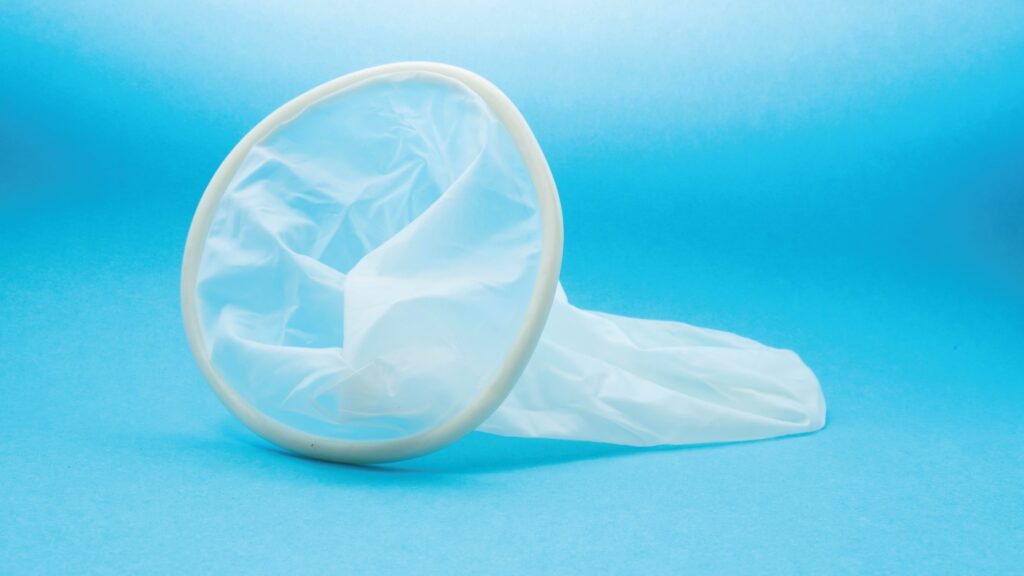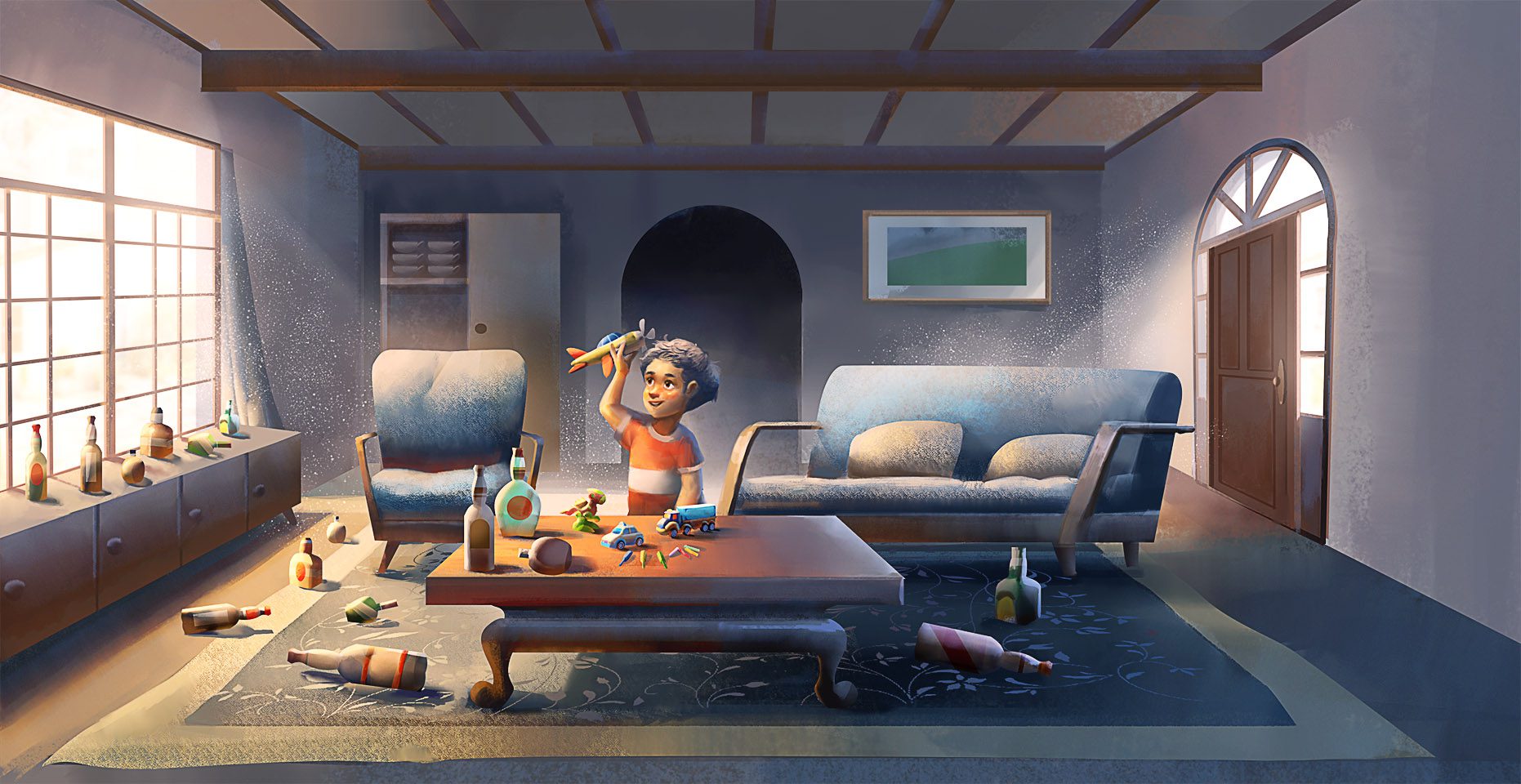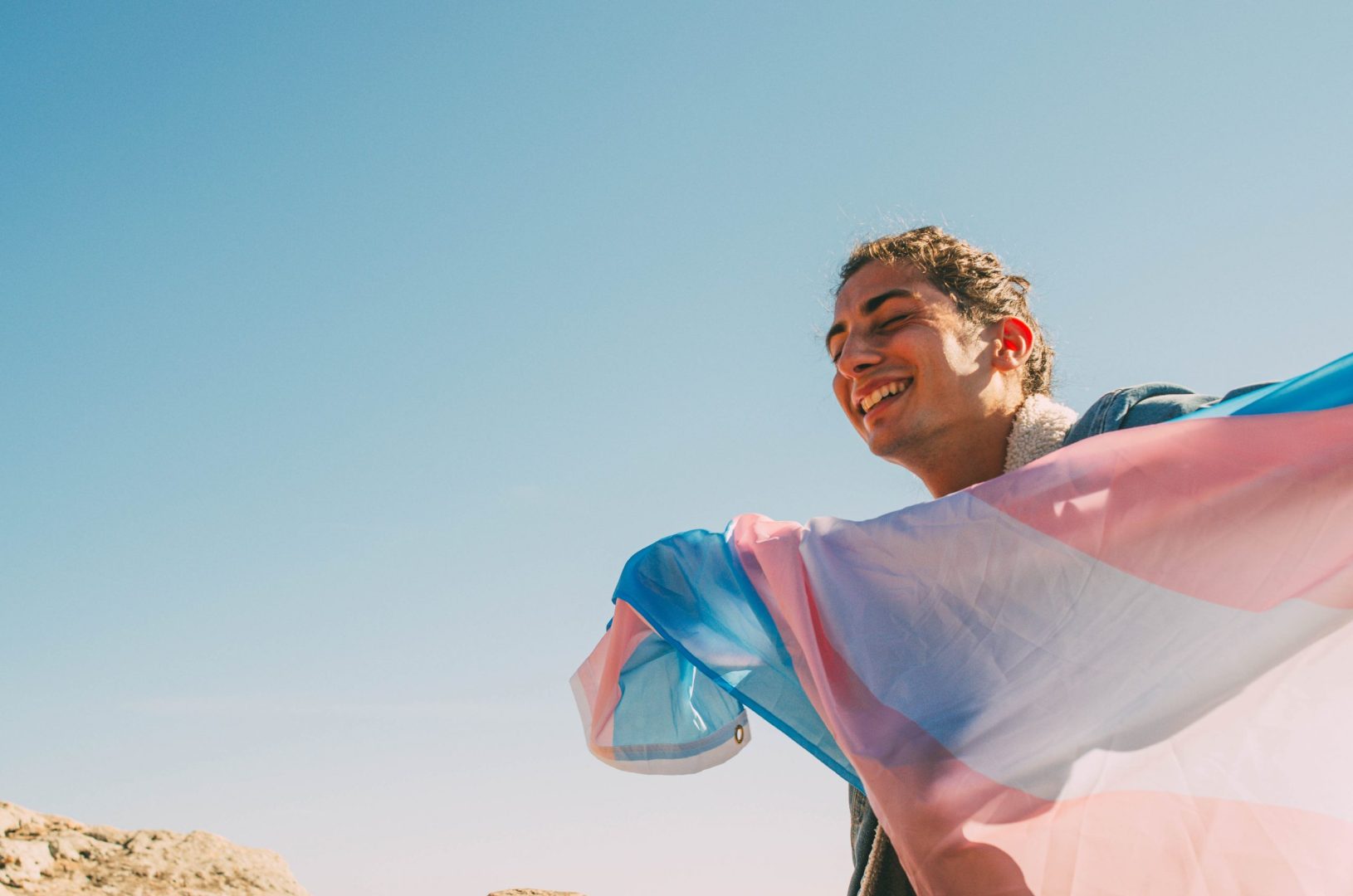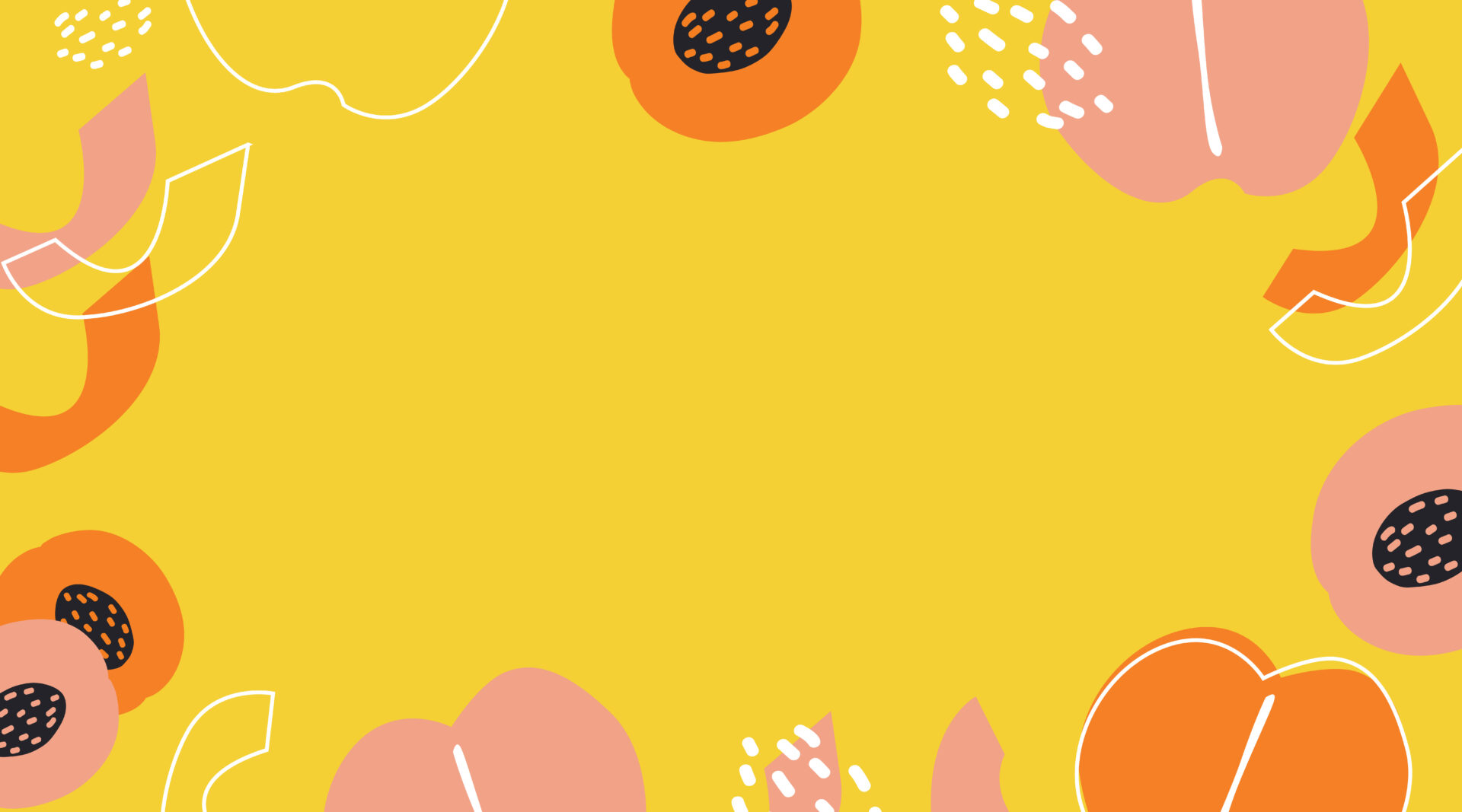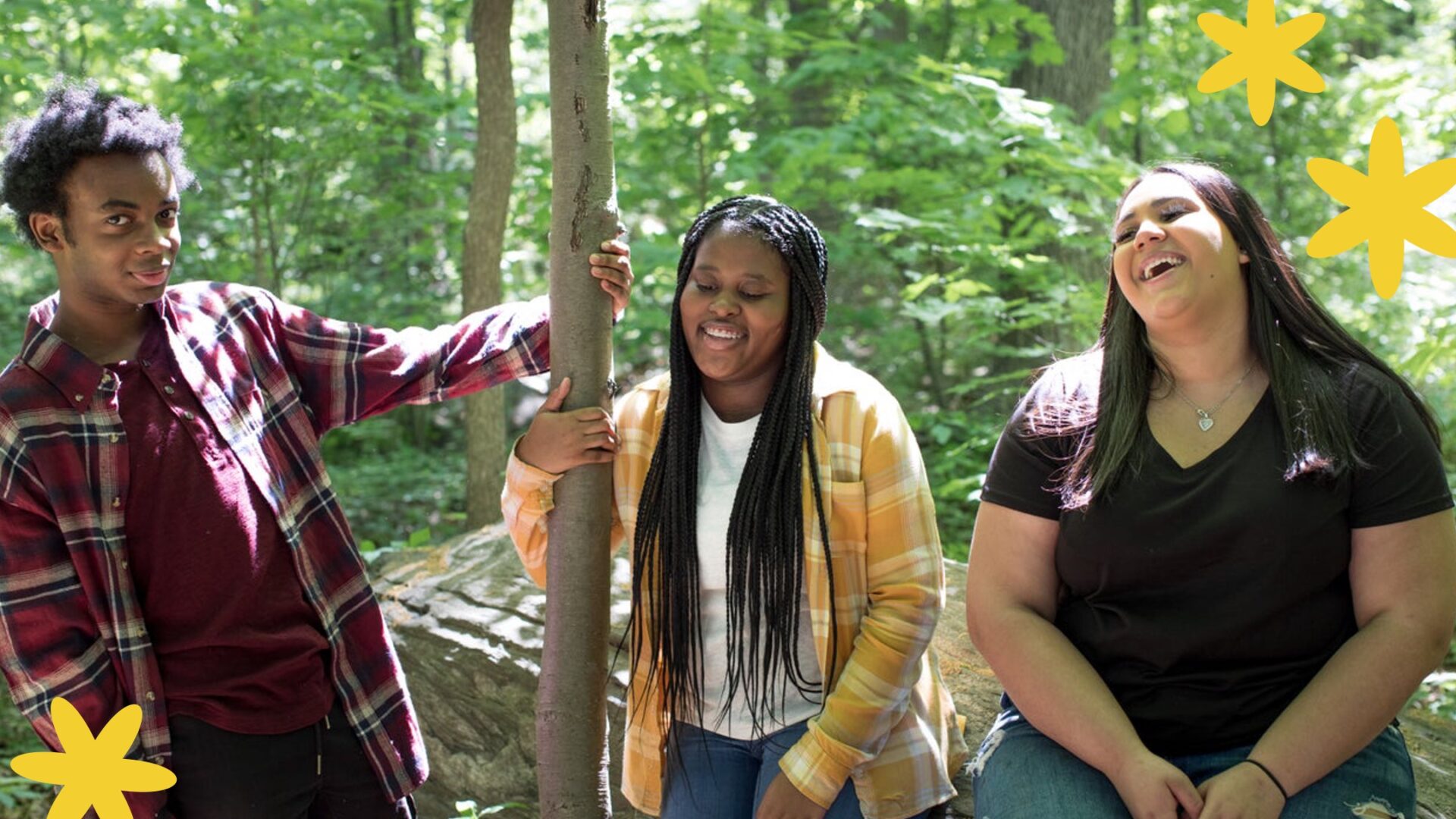I’ve always been passionate about finding ways to live more sustainably. I bring my own bags to the store, buy secondhand when I can, and constantly look for ways to waste less. When I started looking into how our periods and sex lives affect the planet, it turns out that they both have a big environmental impact that doesn’t usually get talked about.
When I started looking into how our periods and sex lives affect the planet, it turns out that they both have a big environmental impact that doesn’t usually get talked about.
Tampons, pads, and panty liners all add up—especially when you count the plastic applicators, the wrappers, and the fact that most of these products aren’t biodegradable. The same goes for condoms, lube bottles, sex toy packaging, and all the batteries and chargers that come along with them.
The average menstruating person will use more than 11,000 disposable products in their lifetime. Most tampons and pads are packed with plastic that takes 500-800 years to break down. That’s longer than our great-great-great-grandkids will be around.
And those microplastics? They’re not just polluting oceans—they might be messing with our health too.
Finding what works for your period
A 2022 study looked at the environmental impact of different menstrual products, including how they’re made, packaged, transported, used, and disposed of. Here’s what it found:
Menstrual cups came up on top
They have the lowest carbon footprint of any option. According to the researchers, a menstrual cup only needs to be used for one month to be considered “worth” the emission it takes to buy one.
“We always talk about ‘break even points’ in these studies: how many times do you have to use a renewable product before it has made up for the emissions caused in its manufacturing and use phases, compared to a single-use product?” says Philippa Notten, co-author of a report on the environmental impact of single-use menstrual products. “For many products, it’s often really high, like 100 times. With a menstrual cup, you only have to use it for a month before it breaks even on its carbon footprint.”
Menstrual discs, which sit differently than cups, may also be a better choice for people with copper IUDs. Brands to check out include DivaCup, Saalt, Cora, and Package Free Shop.
Period underwear ranked second
These are absorbent, washable undies that can replace liners or pads altogether, or serve as backup on heavier days. Because you’d be wearing underwear anyway, they reduce overall laundry-related emissions compared to reusable pads. Brands like Thinx, Knix, Aisle, Saalt, and Period.co all offer options in a range of sizes and absorbencies.
Reusable pads and liners came next
These are washable cloth pads you can use again and again. You can buy them from brands like GladRags or Aisle, or even make your own using cotton fabric or flannel. There are also many locally made options on Etsy!
If you’re not ready to go full reusable, there are organic, PFA-free options like August (their wrappers are made from paper!), Aruna (compostable pads!), or Cora.
Watch out for greenwashing—terms like “natural” and “biodegradable” sound great, but they’re not regulated. Some “biodegradable” stuff still takes 1,000 years to break down. It takes a little digging, but you can often get a better sense of a company’s commitment by looking at their sustainability practices, impact reports, and how transparent they are about their materials and supply chain.
Switching to reusables takes practice. There’s a learning curve, and not every product works for every person. Menstrual cups or reusable pads aren’t accessible or comfortable for everyone. Some cultures also have taboos around inserting anything into the vagina.
“The most sustainable menstrual product is the one you will actually use,” says Sophie from Sustainably Lazy.
The key is to mix and match. Find a balance between sustainability and practicality. Period underwear on lighter days, a reusable pad overnight, or organic tampons on the go.
“We don’t need a handful of people doing zero waste perfectly. We need millions of people doing it imperfectly.”
I like to keep Anne Marie Bonneau’s quote in mind: “We don’t need a handful of people doing zero waste perfectly. We need millions of people doing it imperfectly.”
Sustainable sex isn’t about skipping safety
There aren’t many eco-friendly condom options, and the ones that exist (like lambskin) don’t protect against STIs. So what do we do?
We still wear them. Period.
“We have to consider what waste is worth producing and what isn’t,” says environmental sustainability scientist Dr. Adenike Akinsemolu. “People shouldn’t not use condoms or birth control because of the waste aspect…Safe sex, whether using eco-friendly products or not, is the most sustainable for people and the planet in the long run.”
That said, there are ways to reduce the waste that comes with sex:
- Choose condom brands that use recyclable packaging or reduce plastic use.
- Never flush condoms (seriously—just don’t).
- Pick water-based and cruelty-free lubes in recyclable or glass packaging.
- Consider buying in bulk to reduce packaging waste.
- Look for sex toys made of wood, glass, natural stone, or body-safe silicone.
- Pick rechargeable or USB-powered toys to avoid battery waste.
- Some companies, like Lovehoney, offer take-back programs to recycle used toys.
- Depending on local laws, gently used toys may be donated—or even upcycled into art!
- Invest in sustainable, well-made lingerie over fast fashion pieces that quickly wear out and are associated with worker exploitation.
- Choose organic cotton or bamboo bed sheets—they’re made to last longer.
Being sustainable in the bedroom can also go beyond products.
“For some, being eco-friendly sexually means selecting lubes, toys, bed sheets, and condoms that have less impact on the planet,” says Dr. Akinsemolu. “For others, it entails reducing the damage in the creation of porn to workers and the environment. Both examples are valid and of importance.”
Consider also:
- Supporting brands with ethical manufacturing practices and transparent supply chains.
- Considering ethical porn platforms, which center on worker safety, fair pay, and consent.
- Shopping local or ordering from small businesses online to reduce shipping emissions.
- Buying in bulk when it makes sense to cut down on packaging waste.
- Recycling accepted packaging materials using programs like Terracycle.
The bottom line
Sustainability isn’t all-or-nothing. The most important thing is to find what works for you—products you feel comfortable using, that fit your life.
If that means trying one new thing or making a small switch, that’s still progress.
Not everything that’s labeled “green” is truly sustainable, and not everything sustainable is accessible.
Not everything that’s labeled “green” is truly sustainable, and not everything sustainable is accessible.
The key is balance: Protect your body, care for your needs, and do what you can to reduce waste where it makes sense. Even one small change adds up.
P.S. This info is up to date at the time of writing, but science keeps moving! Keep an eye out for new research and always check with your healthcare providers for your personal situation.
Disclaimer: Inclusion or identification of organizations, individuals, information, content, and materials in Healthy Teen Network blogs does not constitute a recommendation or endorsement.
PHOTOS BY: REPRODUCTIVE HEALTH SUPPLIES COALITION
Patricia is a curious learner who loves to ask questions and find patterns. If you look closer, you might see a literal light bulb above Patricia’s head when she sees a connection or realizes something in her research. Patricia loves using those insights to co-create changes—big or small—that make the world a better place. Having grown up in three different countries, Patricia sees the world differently and always makes time for travel. In her free time, Patricia can be found browsing offbeat Airbnbs or walking her sweet, black cat on a leash (yep—it’s one of Patricia’s proudest accomplishments). Read more about Patricia.

